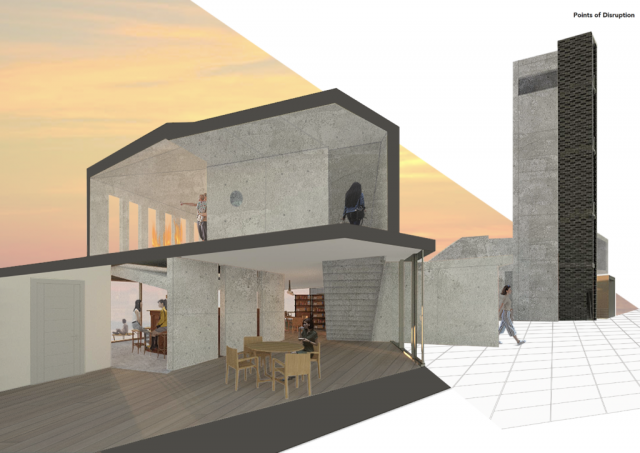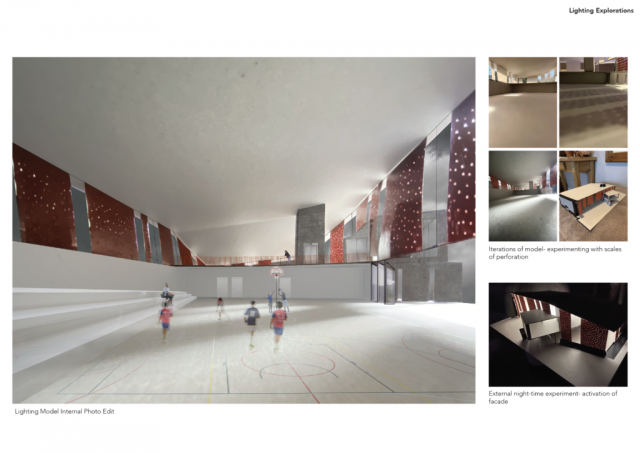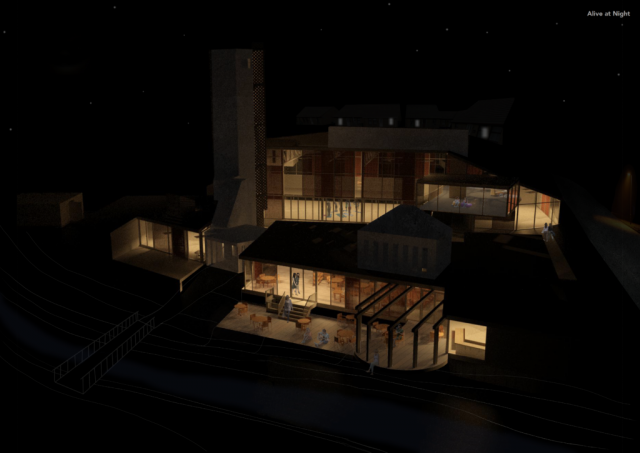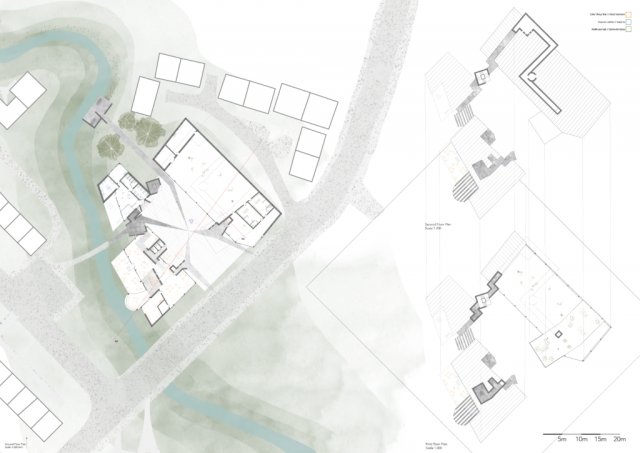Rituals and Identity
This project’s aim is to revitalise the identity and character of Fochriw through the creation of spaces for secular and sacred rituals.
“My brief developed during the autumn term where we each individually researched rural and our interpretation of it. My focus became the distinct identities and characters developed within rural communities, and the importance of collective rituals in the maintenance or creation of these identities. My proposal became a community intervention to revitalise the identity and character of Fochriw, a former South Wales mining village in a state of social and economic decline. Through the creation of spaces for both secular and sacred collective rituals, my aim was to strengthen community ties to create a more actively engaged community, enabling them to take back control of their identity. My proposal consists of a centrally located village site, acting as a hub for the secular, every-day scale of community interactions, and a series of sacred sites set out into the landscape, which host more substantial collective rituals, strengthening the every-day connections to create a true entity and community.”
Contact info:
Emily Chance-Hill
EmilyCHill1999@gmail.com
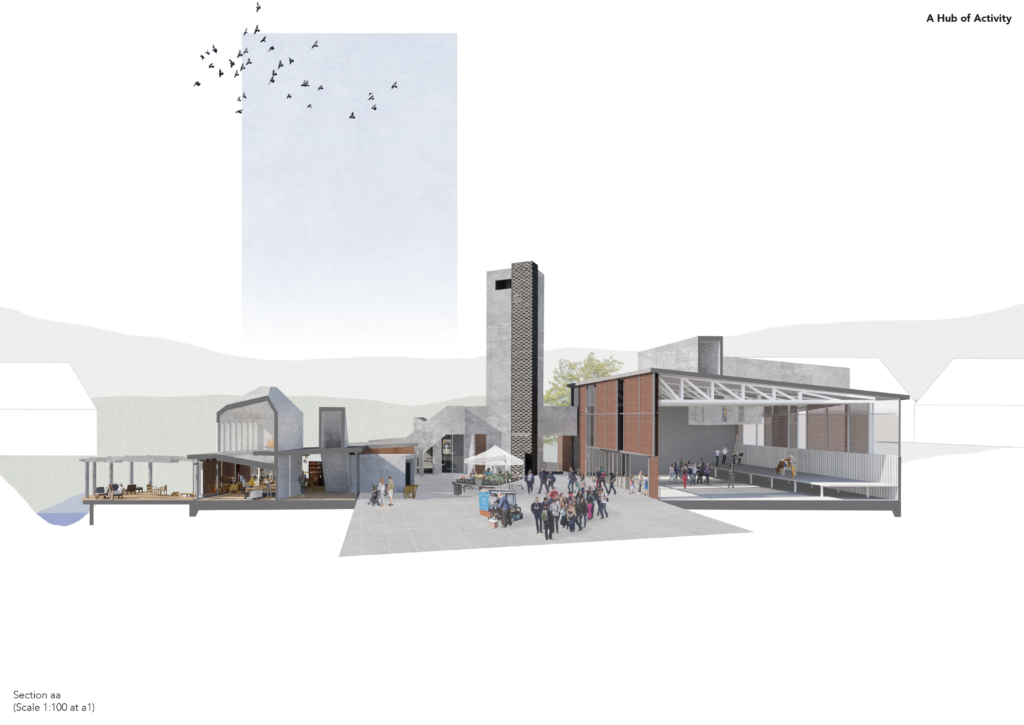
One of my major design principles was to enrich and prolong everyday secular routines by disrupting or diverting behaviours to engage with other activities, creating community ties that otherwise may not have connected. This section cuts through the entire width of my central site, showing the intersection of some of these activities. I have populated the image with how I imagine it would be used when hosting a village event such as Waun Fair, an agricultural and farming market which was once held near Fochriw. The fair was included in my proposal for rituals to be reintroduced into the village.
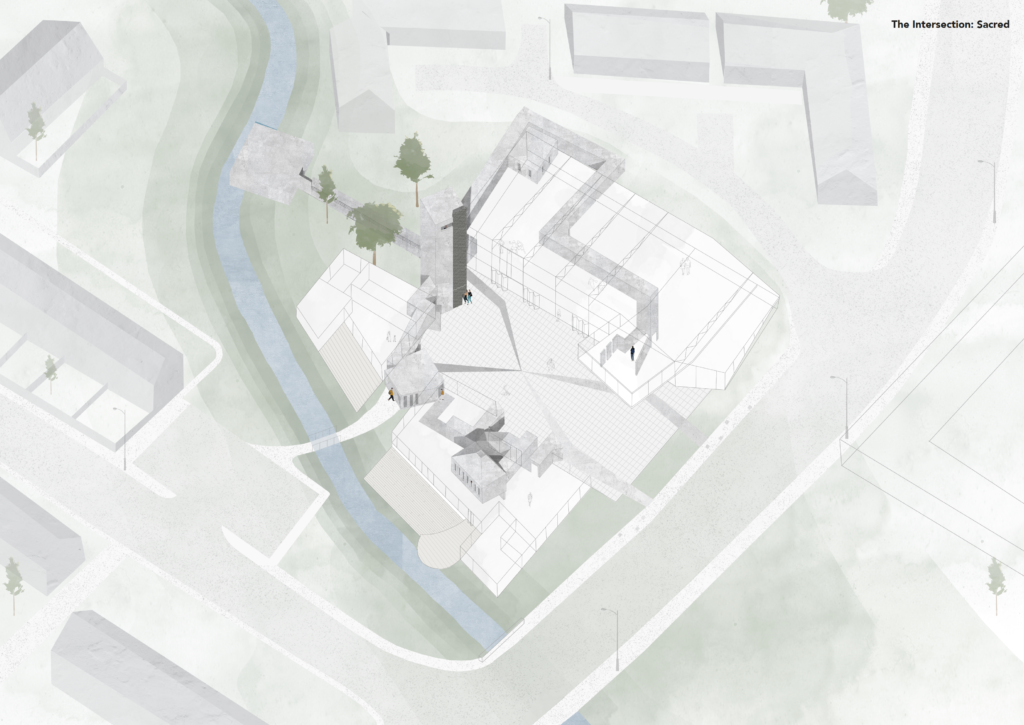
To act as a link between the centrally located secular hub and the outlying sacred sites, a sacred route containing sister moments which link to each pavilion intersect the secular buildings. The physical presence of the route acts to divert attention within each space, but also draws visitors into the route at key points to introduce sacred activities.
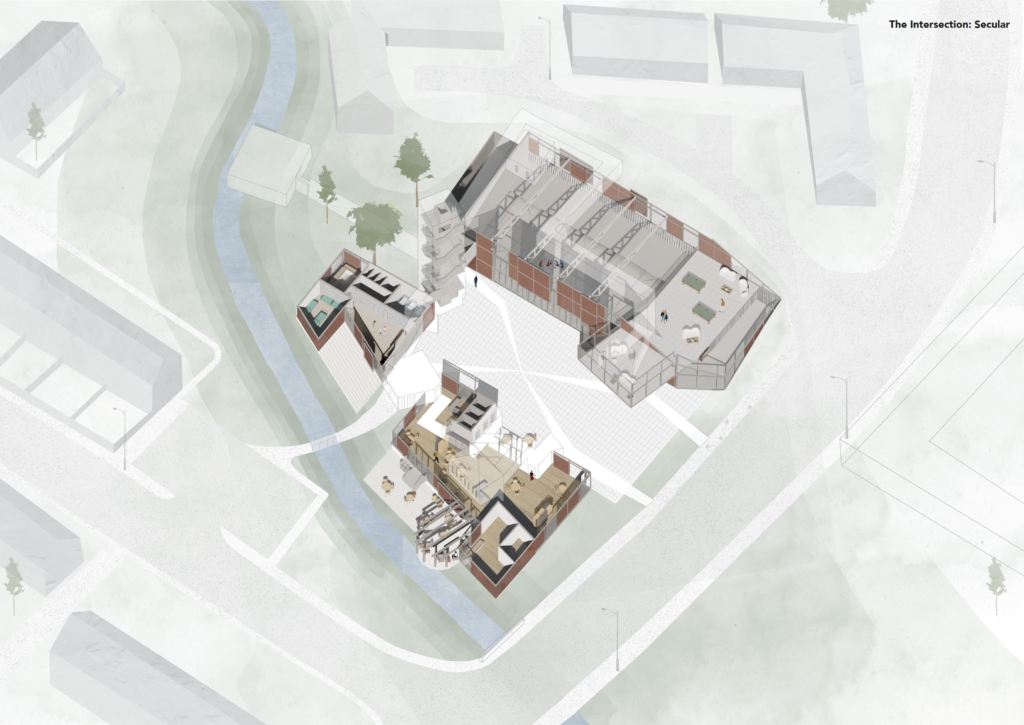
This is the second drawing in the 2 part series exploring the intersection of the secular and sacred components of the central site.
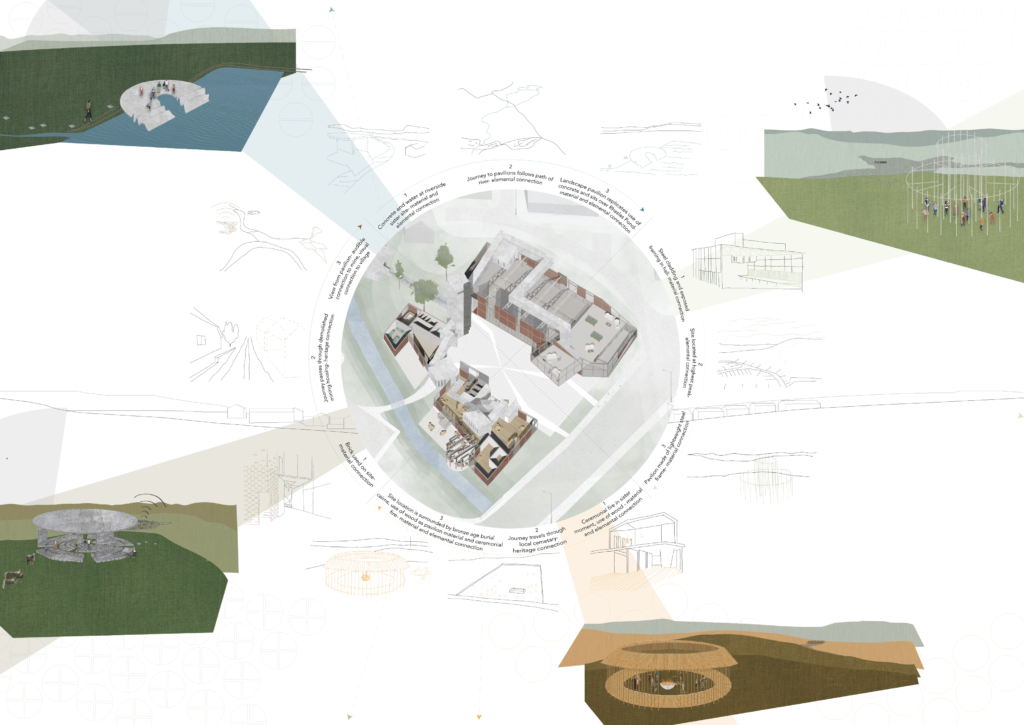
This is a summary of how each building on the central site is connected to their corresponding sacred pavilion. As well as the connection through secular building use, such as the café’s connection to fire and food production linking to the landscape pavilion associated with fire, for example, there are also links through material use, ancient symbolism representative of each element and through landmarks along the journey from the site to each pavilion.

